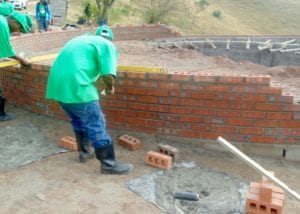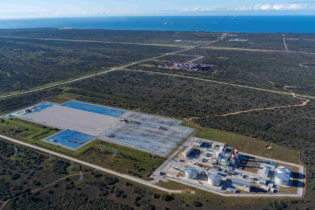Traditional mud brick rondavels can be easily and affordably upgraded to increase thermal efficiency and aesthetics with the addition of a face brick “skin”. Architect and lecturer, Mthembeni Mkhize, has been researching methods to improve on the traditional Nguni housing structure for the past few decades.
“I visited Okhahlambeni area, Maphumulo, as a baby and then later in life,” explained Mkhize, recalling the area that ignited his architectural passion and initial introduction to rondavels. “I wanted to contribute to improving the quality of life of the people living there.” Mkhize spent the next few years of his life researching various traditional housing structures across the globe, visiting places such as Egypt and the United States of America. “In 1994 I visited Arcosanti in Arizona, USA, where there is an urban design experimental project in the mountains done by architect, Paolo Soleri,” said Mkhize. “I focused on the innovation of the design and environmental accountability,” he said, explaining that improved thermal designs decrease the need for electricity, particularly pertinent in modern South Africa. The Meseni Zulu Homestead Laboratory Lessons for Cities This prompted the development of Mkhize’s latest project, The Meseni Zulu Homestead Laboratory Lessons for Cities, which seeks to improve the longevity of the mud rondavel by adding a brick “jacket” to the outer side. The project involved the construction of seven “show” rondavels in the mountain area of Maphumulo, with the outer brick layer of 2 000 of Corobrik’s clay face bricks added to each rondavel of the homestead. Corobrik contributed further by providing training in basic bricklaying for 12 candidates selected by the local community, providing them with an invaluable skill which will allow them to build in the area they reside. The weeklong course, which was headed by Corobrik Building Training Co-ordinator, Derek Dimba, was done on site, with each trainee being educated in basic bricklaying and then moving on to build a complete rondavel. Every trainee also received a certificate and complimentary set of bricklaying tools consisting of a trowel, spirit level, builder’s line and tape measure. Brick choice Commenting on the brick choice, Mkhize said: “I opted to use Corobrik’s range of Burnt Apricot face brick for the single layer of ‘skin’ to cover the mud brick construction.” Corobrik’s Allin Dangers said Mkhize had made the right selection in Corobrik’s face brick range.“We are really proud to be a part of this exciting initiative. The outer layer of clay face brick is an innovative yet complementary application in the context of a traditional building concept.”
“The skin of face brick is set to further enhance thermal comfort, safety and security, also contributing to that important sense of status that comes with owning a clay face brick home.” He said the Burnt Apricot face brick fitted the project in terms of affordability, colour and texture and the required durability to ensure a long lifecycle. “It so happens this clay brickwork offers all the fire resistance qualities that are particularly important in rural landscape settings and rondavel dwellings where open fires are often used for warmth and cooking,” said Dangers. Energy efficiency This house construction type will contribute to the lowering of energy demands on the national grid and boost power generation, helping the government to meet its electricity needs for future housing programmes. The addition of a wood and coal stove in the centre of the rondavel added to the thermal efficiency, allowing for the cooking of food, heating of the home in winter and promoting a central focal point for the family. “The stove has a chimney taking the fumes out the rondavel which means no chance of suffocation. It also lowers the risk of fire.” Another important benefit of this construction method is sense of pride that comes with living in a traditional building that has been enhanced with a face brick finish. “The homes are set to meet the aspirations of the prospective homeowners to live in aesthetically pleasing houses which are built using quality materials that lend dignity and provide a sense of home,” he said. The face brick layer is easily constructed and attached to the mud bricks using a wire mesh bond.







